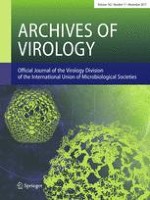Published in:

01-11-2017 | Review
HSP90: a promising broad-spectrum antiviral drug target
Authors:
Yiliang Wang, Fujun Jin, Rongze Wang, Feng Li, Yanting Wu, Kaio Kitazato, Yifei Wang
Published in:
Archives of Virology
|
Issue 11/2017
Login to get access
Abstract
The emergence of antiviral drug-resistant mutants is the most important issue in current antiviral therapy. As obligate parasites, viruses require host factors for efficient replication. An ideal therapeutic target to prevent drug-resistance development is represented by host factors that are crucial for the viral life cycle. Recent studies have indicated that heat shock protein 90 (HSP90) is a crucial host factor that is required by many viruses for multiple phases of their life cycle including viral entry, nuclear import, transcription, and replication. In this review, we summarize the most recent advances regarding HSP90 function, mechanisms of action, and molecular pathways that are associated with viral infection, and provide a comprehensive understanding of the role of HSP90 in the immune response and exosome-mediated viral transmission. In addition, several HSP90 inhibitors have entered clinical trials for specific cancers that are associated with viral infection, which further implies a crucial role for HSP90 in the malignant transformation of virus-infected cells; as such, HSP90 inhibitors exhibit excellent therapeutic potential. Finally, we describe the challenge of developing HSP90 inhibitors as anti-viral drugs.